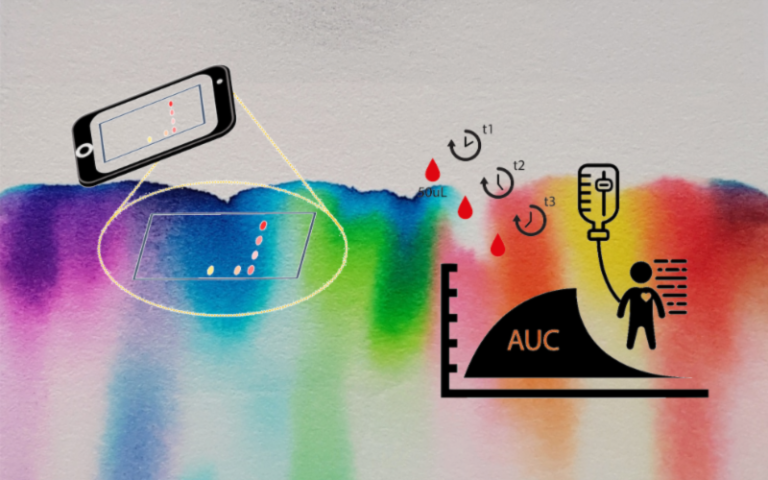UCL researchers exhibit drug monitoring device at Royal Society Summer Science Exhibition
6 July 2023
A new drug-monitoring tool, developed by a consortium including UCL researchers, calculates how much cancer medicine is in a patient’s blood to help reduce heart problems and other side effects experienced by children in the UK who receive chemotherapy drugs.

Researchers from all around the UK have descended on London this week to exhibit at The Royal Society Summer Science Exhibition, which runs until 11th July. Among the exhibits is ChromaDose, a research project involving a consortium of UK scientists, clinicians and patients who are developing a point-of-care therapeutic drug monitoring (TDM) that could be available in hospitals by 2025.
It is hoped the ChromaDose device will help to reduce the incidence of life-limiting health complications, such as heart problems and other treatment-related side effects experienced by up to 65% of the 10,000 children in the UK who have received anti-cancer medicines. The device will help doctors to calculate tailored doses for future patients.
The ChromaDose technology is based on an inexpensive and simple chemical analysis, which can be carried out quickly and easily at the bedside.
The three-year project – a collaboration between researchers, clinicians and patients from University College London, Newcastle University, Great Ormond Street Hospital, the University of Birmingham, the London In-Vitro Diagnostics Co-operative and manufacturer Vesynta Ltd – has received a £980,000 grant from the National Institute for Health and Care Research (NIHR).
The aim of the work is to enable all children receiving chemotherapy to benefit from the safety and effectiveness of personalised treatment. Many oncologists believe bedside TDM will be an important step towards achieving the best survival outcomes with the least toxic cost to patients, but while diagnostic techniques are developing quickly, cutting-edge approaches do not always translate to the clinic.
Dr Stefan Guldin (UCL Chemical Engineering), co-lead on the ChromaDose project, said: “Because we were previously struggling to translate a lab-proven but complex scientific concept, we devised a simpler, more robust process that gives us surprisingly accurate results, even when used by a non-specialist.
“The technique combines chromatographic separation and fluorescence-based quantification, which we deploy in a medicine specific disposable cartridge that can be analysed on a desktop.”
Survival rates in childhood cancer have increased in the UK with more than 70% of patients surviving 20 years or more following diagnosis, but this also comes with an elevated risk of life-changing, long-term side effects in adulthood.
Professor Pamela Kearns, Paediatric Oncologist and Director of Cancer Research UK’s Clinical Trials Unit, is one of the clinicians involved in the project: “There are huge variations in the way children distribute, metabolise and clear drugs from their bodies so using height and weight measurements, as we have historically done, is inherently inaccurate. Many children are potentially either under-dosed, which reduces efficacy, or over-dosed which results in toxic side effects.
“Getting the right dose of chemotherapy medicine for each patient, especially new-borns and infants in their first weeks of life, is vital to both optimise efficacy and minimise toxic side effects. It’s a fine balance and if we get it wrong it can have serious implications.”
Professor of Cancer Pharmacology at Newcastle University, Gareth Veal, said: “Centralised TDM of other cancer drugs, namely carboplatin, has been shown to deliver clinical benefit and reduce toxic side effects but only a small proportion of children are currently offered this service. The administrative and logistical burden of transporting samples to the Newcastle laboratory and being on hand to receive the results and integrate them into a dosing regimen is currently high.
“A bedside therapeutic monitoring tool would be a game-changer and has the potential to improve clinical outcomes in the long-term for a significantly increased number of childhood cancer patients.”
The Royal Society Summer Exhibition runs from 4-11th July 2023 in London. The programme and further details are available here.
Links
- Professor Stefan Guldin's academic profile
- ChromaDose website
- UCL Chemical Engineering
- UCL Faculty of Engineering
Image
Credit: Royal Society.
Media contact
Matt Midgley
Tel: +44 20 7679 9064
E: m.midgley [at] ucl.ac.uk
 Close
Close

